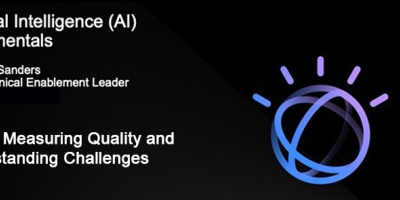Lists are a special type of “thing” in C#; they have no parallel in RPG. This is most unfortunate, because lists are awesome!
Written by Rafael Victória-Pereira
The last couple of TechTips introduced Arrays and explained the foreach loop. This kind of sets the stage for the List data type. You can think of a List as an Array with all the bells and whistles and none of its limitations. For instance, when you define an Array, you have to define its size. That value is (more or less) definitive, because the memory will be statically allocated to store the variable. Lists, however, are dynamically allocated, which means that you don’t have to specify the size of the List. Actually, you can’t specify it. Instead, you’re able to specify the initial capacity, but even that is optional.
The other cool thing about the List is that it comes with its own set of methods. If you think back a bit, you’ll realize that every operation performed over an Array requires us to write code: you need write code to find the next available position to add a new element, you need to write code to rearrange the Array when an element is removed, and so on. Guess what: Lists have methods that do all the heavy lifting for you!
Lists are part of a special group of data types, called generics, which can be seen as data meta-types. These data types are special for two reasons: first, they have their own methods for the main operations you most frequently perform; second, they are generically built, which means that they work the same, regardless of the “child” data type you use to truly define them. What I’m trying to say here is that when you define a List, you actually define a List of something, not just a List. Unlike an int or String, which by themselves define the data type and its related operations, generics, such as the List, require additional information about the “child” data type.
Creating Your First List of Strings
I bet you’re itching to see the List in action, so without further ado, let’s begin. Create a new project, following the instructions from this TechTip if you don’t remember how to do it, and name it “IntroducingLists”. Let’s start by creating a new variable named serverNames. This variable will be a List of strings, or in C# lingo, a List<string>.
One way to define a variable is by using the data type followed by the variable name, as I’ve been doing. For instance, two TechTips ago I defined an Array of ints using int[] myFirstIntArray = new int[10]; There’s a clear pattern here: data type (int[]) followed by the variable name (myFirstIntArray); this is what declares the variable. The code after the equals sign (=) is used to initialize it. I’ll now present a different way of declaring a variable, which will work only when the initialization part is present:
var serverNames = new List<string>();
By using the var keyword, I’m asking the compiler to figure out which is this variable’s data type. Naturally, the initialization part (new List<string>()) helps, because it contains all the information the compiler needs to determine that I’m trying to create a List of strings, named serverNames. In conclusion, writing var serverNames = new List<string>(); is the same as writing List<string> serverNames = new List<string>();.
Either solution creates an empty List of strings named serverNames. You might recognize the name from the array of strings I defined on the previous TechTip. I’ll be using the same name and contents so that you can compare the Array and List operations related code later. Now let’s add some stuff to this list, using one of its many methods:
// Adding elements to the List, one by one
serverNames.Add("S/38");
serverNames.Add("AS/400");
Feel free to follow along coding by typing or copying and pasting these three lines of code (declaration plus the two additions) inside the Main method of your program. Now that my list is no longer empty, I want to know how many elements it contains (of course, I know: I just added two elements to it, but just bear with me). If this was an Array, you’d have to write a FOR loop and use a counter to determine the total number of filled positions. But this is not an Array, so it’s much simpler to figure out how many elements a List has:
Console.WriteLine("After the inital additions, the list has " + serverNames.Count + " elements.");
Note that the absence of parentheses after the Count tells us that this is a property, not a method, of the serverNames variable. It’s simple to add elements, one by one, to a List. However, you can also add multiple elements at once, either by concatenating Lists (using the Concat method) or by adding a range of elements from another list (using the AddRange method, which I’ll demonstrate in a minute). However, before using either method, I need another list, so let’s create one by typing the following line of code:
List<string> additionalNames = new List<string>() { "iSeries", "IBM i" };
Here, I’m using the traditional variable declaration syntax. The novelty here is the initialization of the list, using a group of values separated by commas, stuffed between a pair of curly braces. This will effectively create and initialize a list, in one single step. Note that you don’t have to write everything in the same line. For readability’s sake, the most appropriate syntax for the statement above is writing an element per line, as I showed on the previous TechTip when I declared and initialized an array in a single instruction. Anyway, I’m now ready to add this second list of names to my initial list. I’ll do so using the AddRange method:
serverNames.AddRange(additionalNames);
Now let’s wrap up this TechTip (it’s true; now that we were starting to have fun, it ends…) by printing the contents of the list to the console, using a foreach loop:
Console.WriteLine("The complete list (output using foreach):");
foreach (string name in serverNames)
{
Console.Write(name + ", ");
}
Console.ReadKey();
If you run the program now, you’ll see that there’s an element of the list that doesn’t belong there: “S/38”, unlike the other strings, is not a name of our beloved server. The next TechTip will start by removing it and then demonstrate some more List methods. Until then, feel free to comment, suggest, or criticize using the Comments section below.


























 More than ever, there is a demand for IT to deliver innovation. Your IBM i has been an essential part of your business operations for years. However, your organization may struggle to maintain the current system and implement new projects. The thousands of customers we've worked with and surveyed state that expectations regarding the digital footprint and vision of the company are not aligned with the current IT environment.
More than ever, there is a demand for IT to deliver innovation. Your IBM i has been an essential part of your business operations for years. However, your organization may struggle to maintain the current system and implement new projects. The thousands of customers we've worked with and surveyed state that expectations regarding the digital footprint and vision of the company are not aligned with the current IT environment. TRY the one package that solves all your document design and printing challenges on all your platforms. Produce bar code labels, electronic forms, ad hoc reports, and RFID tags – without programming! MarkMagic is the only document design and print solution that combines report writing, WYSIWYG label and forms design, and conditional printing in one integrated product. Make sure your data survives when catastrophe hits. Request your trial now! Request Now.
TRY the one package that solves all your document design and printing challenges on all your platforms. Produce bar code labels, electronic forms, ad hoc reports, and RFID tags – without programming! MarkMagic is the only document design and print solution that combines report writing, WYSIWYG label and forms design, and conditional printing in one integrated product. Make sure your data survives when catastrophe hits. Request your trial now! Request Now. Forms of ransomware has been around for over 30 years, and with more and more organizations suffering attacks each year, it continues to endure. What has made ransomware such a durable threat and what is the best way to combat it? In order to prevent ransomware, organizations must first understand how it works.
Forms of ransomware has been around for over 30 years, and with more and more organizations suffering attacks each year, it continues to endure. What has made ransomware such a durable threat and what is the best way to combat it? In order to prevent ransomware, organizations must first understand how it works. Disaster protection is vital to every business. Yet, it often consists of patched together procedures that are prone to error. From automatic backups to data encryption to media management, Robot automates the routine (yet often complex) tasks of iSeries backup and recovery, saving you time and money and making the process safer and more reliable. Automate your backups with the Robot Backup and Recovery Solution. Key features include:
Disaster protection is vital to every business. Yet, it often consists of patched together procedures that are prone to error. From automatic backups to data encryption to media management, Robot automates the routine (yet often complex) tasks of iSeries backup and recovery, saving you time and money and making the process safer and more reliable. Automate your backups with the Robot Backup and Recovery Solution. Key features include: Business users want new applications now. Market and regulatory pressures require faster application updates and delivery into production. Your IBM i developers may be approaching retirement, and you see no sure way to fill their positions with experienced developers. In addition, you may be caught between maintaining your existing applications and the uncertainty of moving to something new.
Business users want new applications now. Market and regulatory pressures require faster application updates and delivery into production. Your IBM i developers may be approaching retirement, and you see no sure way to fill their positions with experienced developers. In addition, you may be caught between maintaining your existing applications and the uncertainty of moving to something new. IT managers hoping to find new IBM i talent are discovering that the pool of experienced RPG programmers and operators or administrators with intimate knowledge of the operating system and the applications that run on it is small. This begs the question: How will you manage the platform that supports such a big part of your business? This guide offers strategies and software suggestions to help you plan IT staffing and resources and smooth the transition after your AS/400 talent retires. Read on to learn:
IT managers hoping to find new IBM i talent are discovering that the pool of experienced RPG programmers and operators or administrators with intimate knowledge of the operating system and the applications that run on it is small. This begs the question: How will you manage the platform that supports such a big part of your business? This guide offers strategies and software suggestions to help you plan IT staffing and resources and smooth the transition after your AS/400 talent retires. Read on to learn:
LATEST COMMENTS
MC Press Online